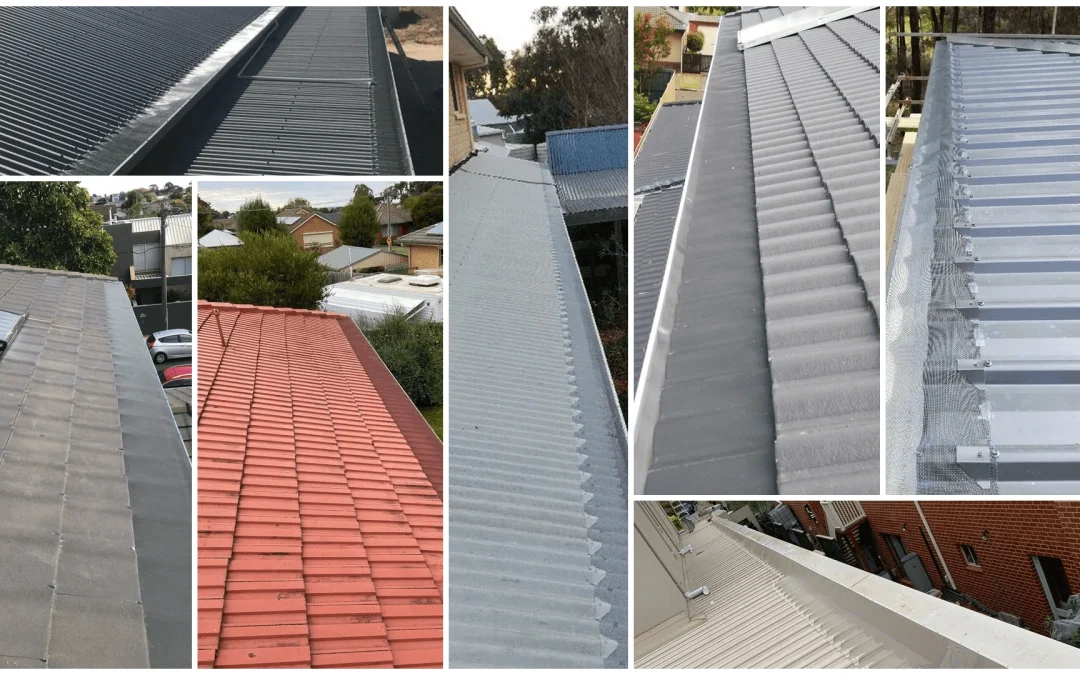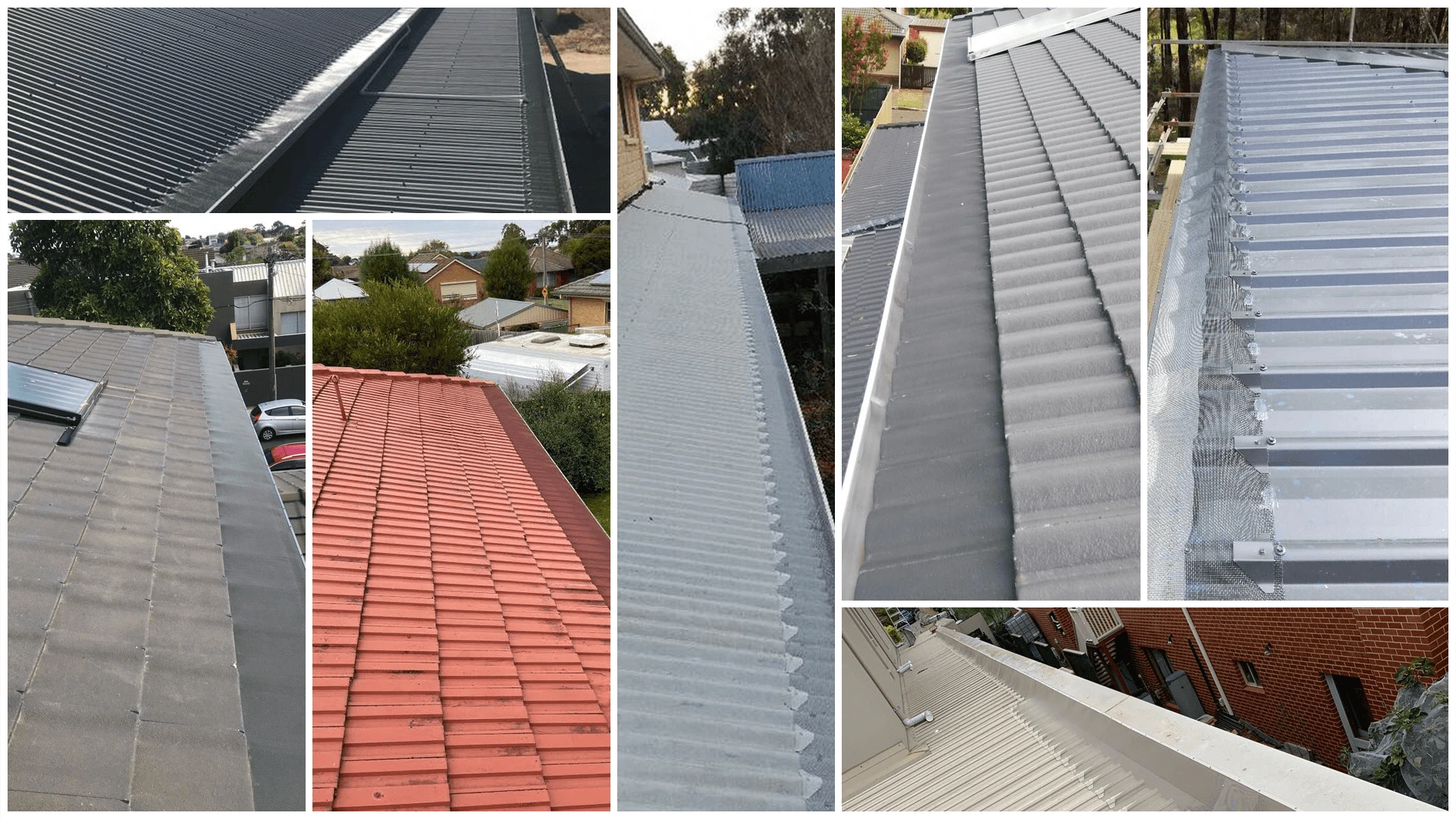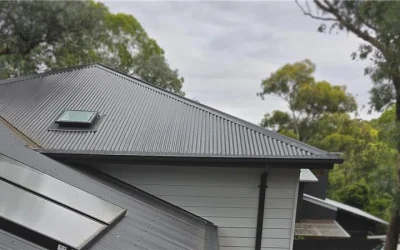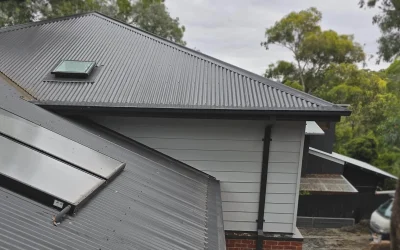Let’s walk through it!
Mix in practical examples, and keep things grounded in what reputable Australian installers (including CPR) say about gutter mesh for valleys and box gutters.
Why box gutters and roof valleys are high-risk zones
Box gutters are rectangular, or tray-style channels concealed between roof planes or along parapet walls. They move serious water. Combine that with the way roof valleys funnel runoff from two roof slopes, and any obstruction can escalate quickly—overflow, staining, or water tracking where you don’t want it. Australian sources repeatedly flag valley gutters as a common failure point when they’re blocked: leaves pack in, water piles up, and then it tries to find the path of least resistance. That can be inside. A fitted gutter mesh layer over the valley helps keep that channel clear so water can sprint to the gutters instead of damming behind debris.
Key takeaway: valleys collect more litter than straight runs, especially on larger or complex roofs. A targeted valley guard or integrated gutter guard system is often the difference between free-flowing drainage and weekend cleanup duty.
What is valley mesh and how does it work?
Valley mesh is a purpose-cut section of gutter mesh installed along the valley channel. It acts like a low-profile filter: debris lands on top, wind and gravity encourage it to slide off, and water passes through the apertures into the valley and onward to the gutters. Some systems use a slightly domed valley mesh shape to maintain a clear runoff path beneath the mesh arch, helping shed piles of leaves or needles before they can clog the channel.
You’ll see valley mesh specified in different widths and materials to suit roof types and debris loads, with installers tailoring the fit to your specific valley profile so water entry remains uninterrupted.
When to choose valley mesh over—or in addition to standard gutter guard
Use this quick decision framework. If any of this sound like your place, valley mesh belongs on your shortlist:
- Heavy leaf fall into valleys: Homes under eucalypts, pines, or jacarandas often see valley channels choke before gutters do. Valley mesh can be the fastest win.
- Complex or multi-valley rooflines: The more junctions, the higher the chance litter gathers mid-roof. Targeted valley protection keeps the network flowing.
- Tiled roofs (including heritage profiles): Valleys on tiled roofs tend to trap blossoms and small debris; fine gutter guard mesh over valleys is especially helpful here.
- Pests and nesting risks: Valleys can invite birds or rodents; fine valley mesh is noted for reducing pest access to the roof cavity.
- High rainfall events: If you cop downpours, you want your valleys to run clear. A contoured or domed valley mesh profile helps keep a free-flowing water corridor beneath.
- Bushfire-prone regions: Where embers and fine debris are concerns, installers may specify fine, non-combustible gutter mesh that also serves as an ember guard when it meets the relevant aperture and combustibility criteria. (Always follow local codes.)
And when would you rely more on a full integrated gutter guard system alone? If your main litter source is from trees overshooting the gutter edge (not falling into the valley), an integrated “ski-slope” style gutter mesh from roof edge to gutter lip may suffice—though many homes benefit from both approaches: valley mesh for mid-roof flow, gutter guard for perimeter protection.
Materials, aperture, and compliance: what to consider
Not all gutter mesh is the same. Common options for Australian conditions include aluminium mesh (lightweight, corrosion-resistant) and stainless-steel mesh (robust under harsher exposure). Aperture size affects water intake and debris rejection; finer mesh helps with smaller litter and, where required, ember guard performance when matched to the standard’s hole size and non-combustibility criteria. Your installer will balance debris type, rainfall profile, and local requirements to recommend the best fit.
Tip: Mixing dissimilar metals without separation can encourage galvanic corrosion. Competent installers account for this during design and fixings selection.
Special notes for box gutters
Box gutters usually demand wider coverage and careful termination details. Because they’re often concealed and handle concentrated flow, you want a gutter protection approach that keeps the tray clear while ensuring water can enter freely along the full run. Purpose-made box gutter mesh kits exist for this reason, allowing a custom width and secure fixings that won’t collapse under debris loads. Experienced installers will tailor the span and fastening to your roof construction so the mesh stays stable and water keeps moving.
How CPR talks about gutter guard mesh and roof valleys
CPR’s resources describe gutter guard mesh as a protective screen fitted over gutters—and, importantly for this topic, sometimes over roof valleys—to keep leaves and sticks out while letting water flow. Their guides also discuss mesh types and practical maintenance to keep performance high over the long term. For tiled roofs (including heritage profiles), CPR highlights how a fine gutter guard mesh over valleys helps shed debris while still passing rainwater—precisely the scenario that leads many homeowners to add valley mesh.
Bottom line: valley mesh aligns with the way CPR frames effective Gutter Protection—keep the waterways open, match the mesh to the roof geometry and debris profile, and maintain it periodically for best results.
Installation nuances that matter
Whether it’s valley mesh or a full gutter guard run, good installers sweat the little things:
- Correct tension and contour: A subtle arch (or domed valley mesh) preserves a free path for water under the mesh and discourages debris beds.
- Secure edges and fixings: Lifted corners invite pests and can snag debris; six-monthly checks keep everything neat.
- Ski-slope principle at the eaves: On perimeter gutters, the mesh should bridge from roof to gutter lip so leaves slide off instead of sitting flat.
- Smart material pairing: Use compatible fasteners and barriers where different metals meet.
Maintenance: quick, seasonal, and sensible
Even the best Gutter Protection in Australia benefits from a simple maintenance routine. A light sweep or blower pass after big shedding events (or the spring blossom drop) helps keep surfaces clear so the mesh can continue doing the heavy lifting. CPR’s guidance is pragmatic: the right gutter guard mesh reduces the grunt work substantially, and periodic care keeps it in peak shape for years.
A practical decision guide
Use this checklist to decide your next step:
Choose targeted valley mesh if:
- You can literally see leaves pooling along valleys after wind or storms.
- You have tiled or heritage profiles where valleys catch more than gutters.
- You’ve noted bird activity or minor nesting close to valleys.
- A previous overflow trace started at a valley junction.
Choose an integrated gutter guard system if:
- Debris mostly skims the eaves and lands near the gutter edge.
- Straight gutter runs choke long before valleys do.
- You want a continuous “mesh-as-roof-extension” look at the perimeter.
Choose both when:
- The roof is complex, tree cover is heavy, or you’ve had repeat blockages in multiple zones.
- You want belt-and-braces Gutter Protection with minimal future hassle.
Bringing it all together
Roof valleys and box gutters move the most water and catch the most debris—so they deserve the most attention. Valley mesh shines where litter congregates mid-roof, on tiled or heritage profiles, and wherever pests or fine debris are persistent. Integrated gutter guard at the perimeter keeps the eaves breathing easy. Many homes choose both for a neat, low-maintenance result that simply works with the way roofs collect and shed water.
CPR’s content underscores the same core idea: choose gutter guard mesh that suits your debris, roof profile, and local conditions; fit it properly (including valleys where needed); and maintain it periodically. That’s smart Gutter Protection—practical, tidy, and tailored to Australian homes.
Ready to talk about your roof?
If your valleys keep clogging—or your box gutters feel outmatched—consider a targeted valley mesh upgrade alongside perimeter gutter guard. You’ll keep the waterways open, cut weekend cleanups, and give heavy rain a clear run off your roof.
FAQs
1. Will valley mesh handle downpours?
2. What mesh material works best?
3. Will gutter guard mesh help with pests and nesting?
4. Does this replace maintenance entirely?
Social Share:
Related Posts
Gutter Protection in Coastal Zones: Beating Salt Spray and Corrosion
Your roof and gutters feel it too. Salt spray, wind and fine sand work together. Corrosion…
Gutter Protection Systems: Save Money & Prevent Home Damage
You glance out the window and notice your gutters overflowing, water spilling over the edges…
Rain-Ready Roofs: Installing Gutter Guards Before 2025’s Wild Winter Storms
With winters coming up, Aussies need to make sure that your gutters are in great shape…





